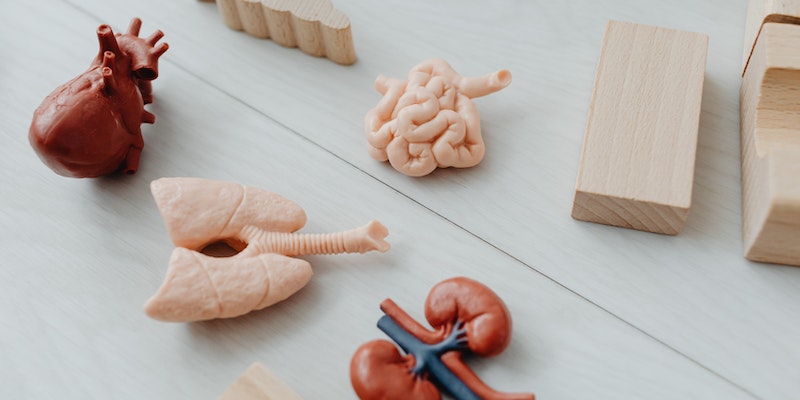
Polycystic kidney disease (PKD) causes several fluid-filled kidney cysts. Cysts can gradually replace many kidneys, diminishing their effectiveness and possibly causing renal failure.
PKD is the fourth leading cause of kidney failure in the US, affecting 600,000. Note that the condition affects males and women equally. It causes 5% of kidney failure, making it a major renal health issue.
Signs and Symptoms
PKD often remains asymptomatic until individuals reach the age bracket of 30 to 40. A notable proportion, about 25%, of individuals with PKD have a medical condition called a "floppy valve" in the heart. This condition can lead to sensations of fluttering or pounding in the chest and, in some cases, chest pain. While these symptoms typically resolve independently, they can sometimes be the initial indicators of PKD.
High blood pressure is the most common PKD symptom, which can cause headaches. Routine physicals often detect excessive blood pressure. PKD management must address high blood pressure, which can worsen kidney injury. Treatment of high blood pressure can slow PKD and prevent renal failure.
Individuals with PKD may also experience the following symptoms:
- Pain in the back or sides
- Enlarged abdomen
- The presence of blood in the urine
- Recurrent bladder or kidney infections
- Elevated blood pressure
- Fluttering or pounding sensations in the chest
Causes
Genes pass PKD from parents to children. The cornerstone of heredity, genes, are passed down from both parents during conception, determining traits like disease predisposition.
The transmission of PKD can occur through two primary modes of inheritance: dominant and recessive.
Dominant Inheritance
In the case of dominant inheritance, the child inherits the abnormal gene from one parent, which suffices for the child to develop the disease. Each offspring from the parent carrying the abnormal gene has a 50% likelihood of inheriting PKD. This probability remains constant, irrespective of the number of children who inherit the disease.
Recessive Inheritance
On the other hand, recessive inheritance necessitates both parents to be carriers of the abnormal gene. The child develops PKD only if they inherit the abnormal gene from both parents, establishing a 25% chance of occurrence for each child. This form of inheritance outlines a scenario where both parents, albeit carriers, may not exhibit any disease symptoms.
Types of Polycystic Kidney Disease

Autosomal Dominant PKD (ADPKD)
ADPKD, the most common form of PKD, accounts for 90% of cases. The condition is passed on by dominant inheritance. Therefore, one copy of the defective gene from one parent is enough. PKD usually starts symptoms between 30 and 40 but can start earlier, even in childhood.
ADPKD symptoms develop gradually and may go undiagnosed until kidney function is reduced. Individuals with a family history of PKD must have frequent kidney health checks to manage the condition if it develops.
ADPKD is characterized by gradual symptoms, which can sometimes remain unnoticed until a substantial part of the kidney function is compromised. Individuals with a family history of PKD need regular check-ups to monitor kidney health and manage the disease effectively if it develops.
Autosomal Recessive PKD (ARPKD)
Contrastingly, Autosomal Recessive Polycystic Kidney Disease (ARPKD) is transmitted through recessive inheritance, requiring both parents to pass on the defective gene for the child to develop the disease. This form of PKD is considerably rarer, affecting 1 in 25,000 individuals. ARPKD is known for its severe progression, with symptoms potentially manifesting as early as in the womb or the initial months of life. Its mortality rate is significant, frequently within months of birth.
ARPKD's aggressiveness and early onset demand rapid medical attention, and families with a history of the disease should seek genetic counseling to understand the dangers and management measures.
Acquired Cystic Kidney Disease (ACKD)
ADPKD polycystic kidney disease, the most common form of PKD, accounts for 90% of cases. The condition is passed on by dominant inheritance. Therefore, one copy of the defective gene from one parent is enough. PKD usually starts symptoms between 30 and 40 but can start earlier, even in childhood.
ADPKD symptoms develop gradually and may go undiagnosed until kidney function is reduced. Individuals with a family history of PKD must have frequent kidney health checks to manage the condition if it develops.
ACKD necessitates vigilant monitoring to manage polycystic liver and kidney disease symptoms effectively and prevent further complications, emphasizing the importance of regular medical check-ups for individuals with a history of kidney issues.
Complications Associated with PKD

Genetic Counseling and Family Planning
Individuals diagnosed with PKD and contemplating starting a family might consider genetic counseling, a service offered by many university medical centers, to understand the potential risks and make informed decisions regarding family planning.
Pregnancy and PKD
Around 80% of women with polycystic liver and kidney disease PKD have successful pregnancies without issues. However, a minority may develop life-threatening pre-eclampsia. The risk is increased for women with high blood pressure and kidney illness. Doctors should actively monitor pregnant women with PKD to protect them and their newborns.
Impact on Other Organs
PKD can extend its influence beyond kidneys, affecting other organs such as the liver, pancreas, spleen, ovaries, and large bowel through cyst formation. Although these cysts generally do not cause serious issues, they can in specific individuals. Moreover, PKD can affect the brain, leading to aneurysms or the heart, resulting in floppy valves and heart murmurs.
Kidney Failure and PKD
As PKD patients age, their chance of kidney failure rises, 50% by 60 and 60% by 70. Men, high blood pressure patients, and women with numerous pregnancies are at higher risk for renal failure, which requires dialysis or a kidney transplant. To reduce PKD risks, health management must be proactive.
Diagnosing Polycystic Kidney Disease
Ultrasound, the most accurate kidney cyst detection technique for Polycystic Kidney Disease (PKD), is non-invasive and inexpensive. Ultrasound results showing no PKD in people over 40 are usually normal.
However, further diagnostic tools such as CT scans and MRI can be employed to detect smaller cysts that might not be visible through ultrasound. Mainly, MRI plays a crucial role in monitoring the progression of the disease by assessing the volume and growth dynamics of the kidneys and cysts.
In certain circumstances, genetic testing may be recommended to ascertain the diagnosis, especially when:
- The results from imaging tests remain inconclusive
- Individuals with a family history of PKD are considering kidney donation
- Individuals under 30 with a family history of PKD and negative ultrasound results are planning to start a family
- Despite its utility, genetic testing is only sometimes recommended due to its high cost and a failure rate of about 15% in detecting PKD in affected individuals.
Treatment Approaches for PKD
Current Research and Lifestyle Changes
PKD has no cure, although research is continuing to identify viable treatments. According to preliminary research, lifestyle changes, including drinking plain water and avoiding coffee, may reduce cyst growth. Understanding PKD's genetics is another focus of research to provide tailored therapy.
In the meantime, supportive polycystic kidney disease causes therapy can manage symptoms and slow disease development, including:
- Rigorous control of blood pressure
- Immediate administration of antibiotics for bladder or kidney infections
- Increased fluid intake upon noticing blood in the urine
- Appropriate pain management (under medical guidance)
- Maintaining a healthy lifestyle through regular exercise, weight management, and reduced salt intake
- The FDA authorized tolvaptan for Autosomal Dominant PKD in 2018. This medicine may delay kidney function deterioration in persons with this type of PKD. This treatment should be discussed with a doctor.
Nutritional Guidelines for PKD
No diet has been shown to prevent polycystic kidney disease and PKD cysts. In hypertensives, a low-salt diet helps lower blood pressure. Moderate caloric, low fat, and balanced diets are recommended for weight maintenance. Consult a doctor or dietician for a coffee-free diet.
Exercise Advice for PKD Patients
Physical activity improves PKD patients' health. However, kidney-harming activities like contact sports must be avoided.



